A variety derived from Arabica #61548; Bourbon and its varieties
For professional baristas, please follow the coffee workshop (Wechat official account cafe_style)
A variety derived from Arabica.
[Villalobos] Vera Robles
This is a branch of the Typica family with elegant floral and sometimes citrus flavours. The variety was brought to Indonesia by Dutch merchants in the late 17th century. We like its subtle and exquisite acidity. Lobos manor beans have strong aromas of stone fruits, such as apricots, peaches and plums.
A variety [Bourbon] bourbon evolved from Arabica species
The mutant variety from Typica, like Typica, is currently the closest to the original species. Bourbon spread from southwestern Ethiopia to Yemen and was brought to Bourbon Island (now Niwan) from Yemen in 1715 and 1718. Bourbon produces 20% more fruit than Typica.
[Bourbon] bourbon
Some coffee experts think it's nothing special that Bourbon is just a natural variant of Typica! But in fact, Bourbon has its own special color, and Typica has the same high-quality taste, like the sour taste of red wine, the aftertaste is so complex, so delicate, this is the Pinot Noir of coffee. Plants are fragile and do not produce as much fruit as other varieties, but they are worth the effort. Bourbon-type cups are rich and classic. It is the coffee in coffee. Its charm has been well received by both strict critics and beginners. Typica and Bourbon can be distinguished by the leaves and beans of the coffee tree.
Coffee in Latin America today is largely developed from Typica and bourbon varieties. 97.55% of Brazilian coffee varieties come from Typica and bourbon. Latin American coffee breeding uses the narrow genetic basis of bourbon to create new varieties with various characteristics, which perform well in terms of yield and quality.
[Bourbon] bourbon
Bourbon trees are high and vigorous, 3000 Typica 4000 plants per hectare, green leaves are green, green leaves are slightly serrated, coffee beans with fruit are smaller and denser, so the appearance of beans is smaller and more round than that of Murray.
The fruits are red, yellow and orange, which change according to variety and soil texture, and red fruit is the most common. Although the seed set of Bourbon is higher than that of Typica, the harvest time is also 2 years, which is also a variety with low yield, and is very vulnerable to leaf rust, berry disease and nematode infection. In order to produce beans with unique flavor and superior flavor, it is appropriate to grow at an altitude of 1000 Murray 2200 meters.
Bourbon
Complex acidity, sweetness of caramel, balance
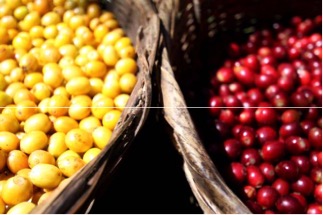
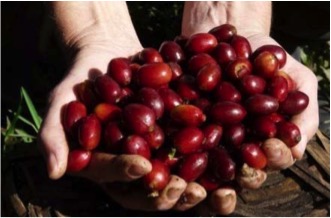
Yellow Bourbon Round Bourbon Tip Bourbon Pointu
Bourbon
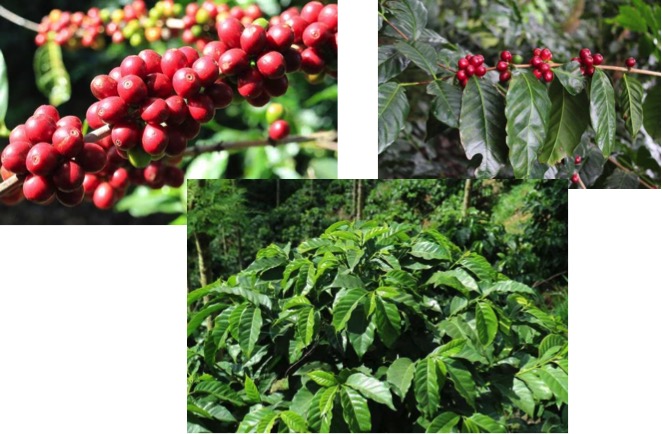
Bourbon
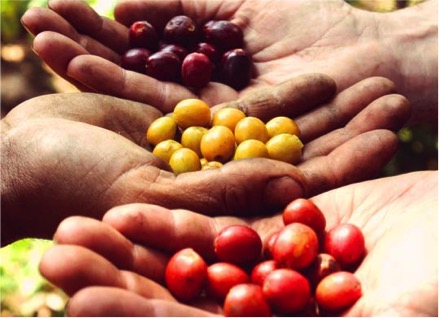
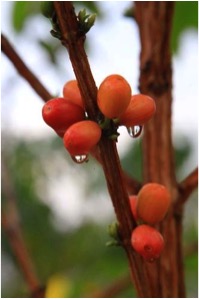
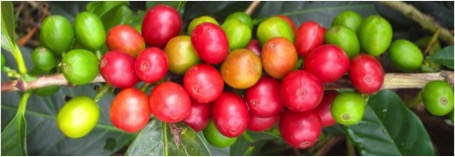
Yellow Bourbon
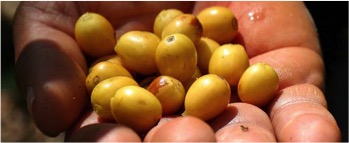
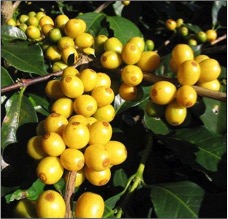
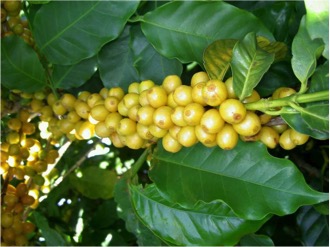
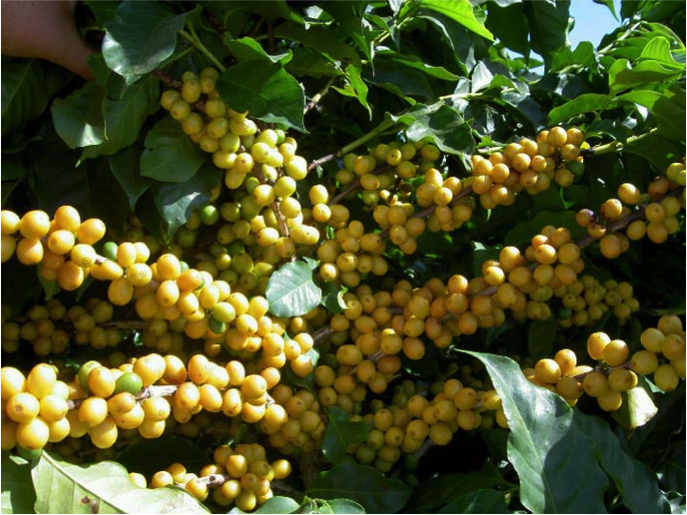
[Tekisic] the evolution of Tieqi rare guest-Bourbon system
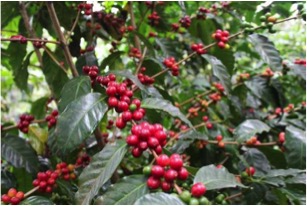
A green top tall cluster selected by ISIC Bourbon of the Salvadoran Coffee Institute, with small fruit, medium and low yield, small and medium beans, good special flavor, layered acidity and obvious thick taste. This kind of coffee has a strong sweetness and tends to taste like caramel and brown sugar. The planting density is 3000 trees per hectare, and the nutrient demand is moderate, so it is suitable to be planted above 1300 meters above sea level. It is extremely susceptible to leaf rust, berry disease and nematodes.
[Villa Sarchi] Verasach-Bourbon system evolution
This bourbon dwarf mutant has elegant acidity, strong fruit tones and excellent sweetness. Planted in the town of Sarchi in Costa Rica, it is susceptible to most coffee diseases and insects.
[Villa Sarchi] Verasach-bourbon variety
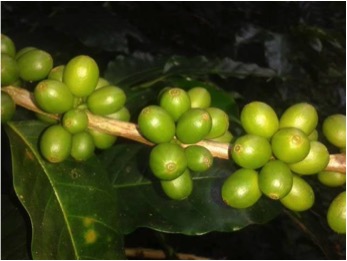
This bourbon green-top dwarf natural mutant was discovered in Costa Rica in the 1950s. Caturra and Pacas are caused by a single gene mutation that causes plants to become shorter, medium cups, small beans, medium yield such as Caturra, and high nutrient requirements. It is susceptible to coffee leaf rust, berry disease and nematodes. Suitable for planting above 1300 meters above sea level.
[Venecia] Vinejia-bourbon variety
This bourbon green top dwarf natural mutant has medium cuppin, large beans, medium yield such as Caturra, and high nutrient demand. It is susceptible to coffee leaf rust, berry disease and nematodes. Suitable for planting above 800 meters above sea level.
Derivation of "SL28" and "SL34"-bourbon hybridization
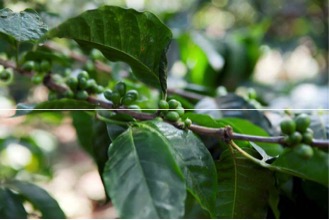
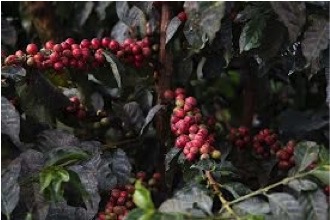
Bourbon progeny and heirloom were hybridized with Bourbon progeny in Kenya Scott laboratory, and new varieties of SL28 and SL34 appeared, but their parents were unknown, and the flavor was excellent with the acidity of blackcurrant. 90% of the coffee produced in Kenya is SL28 and SL34. SL-28 is extremely drought-tolerant and susceptible to CBD, CLR or BBC, failing in its mission to create high yields, but succeeds in creating delicious beans with strong citrus, sweet, balanced and complex aromas. SL34 is characterized by its complex lemon acidity, thick taste, purity and sweetness, and performs well at medium to high elevations. SL34 is extremely drought-resistant and more disease-resistant than SL28.
Important Notice :
前街咖啡 FrontStreet Coffee has moved to new addredd:
FrontStreet Coffee Address: 315,Donghua East Road,GuangZhou
Tel:020 38364473
- Prev
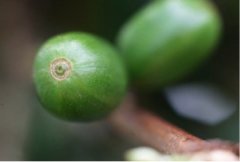
Arabica and Big Fruit Coffee Hybrid [S795] Place Name: Jember Renbo
Professional barista exchanges, please pay attention to coffee workshop (Weixin Official Accounts cafe_style ) interspecific hybrid variety Arabica and big fruit coffee hybrid variety [S795] local name: Jember Renbo This variety was bred by India in the 1940s with Kent (Typica selection, tall, high yield, extremely resistant to leaf rust) and Coffea Liberica. Printed in 1955
- Next
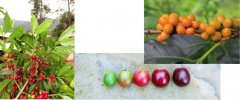
The variety [Caturra] Katura and its variety evolved from Arabica species
Exchange of professional baristas Please pay attention to Coffee Workshop (Wechat official account cafe_style) A single gene natural mutation of [Caturra] Katula Red Bourbon, a single gene dwarf green-top variety evolved from the Arabica species, with 50006000 plants per hectare, no shading, small beans, and higher yield than Bourbon. It was first discovered in Brazil in 1937 and in Minas Ger in Brazil in 1937.
Related
- Does Rose Summer choose Blue, Green or Red? Detailed explanation of Rose Summer Coffee plots and Classification in Panamanian Jade Manor
- What is the difference between the origin, producing area, processing plant, cooperative and manor of coffee beans?
- How fine does the espresso powder fit? how to grind the espresso?
- Sca coffee roasting degree color card coffee roasting degree 8 roasting color values what do you mean?
- The practice of lattes: how to make lattes at home
- Introduction to Indonesian Fine Coffee beans-- Java Coffee producing area of Indonesian Arabica Coffee
- How much will the flavor of light and medium roasted rose summer be expressed? What baking level is rose summer suitable for?
- Introduction to the characteristics of washing, sun-drying or wet-planing coffee commonly used in Mantenin, Indonesia
- Price characteristics of Arabica Coffee Bean Starbucks introduction to Manning Coffee Bean Taste producing area Variety Manor
- What is the authentic Yega flavor? What are the flavor characteristics of the really excellent Yejasuffi coffee beans?

